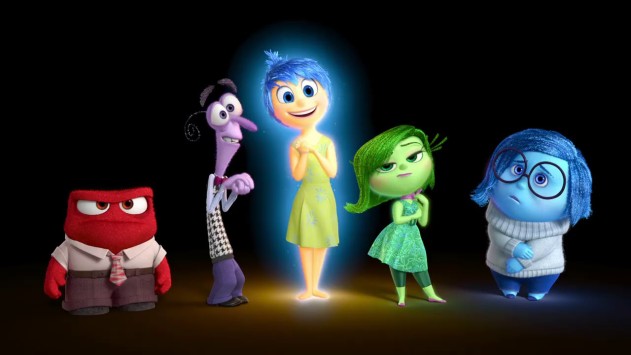It’s drilled into our heads by society that we’re supposed to be happy, and if we aren’t, there’s something wrong with us.
Most of us grow up believing that happiness is the best and most important emotion that we can feel. The goal of life is to be happy at all times, and all other emotions should be controlled or shut out completely. It’s this misconception that causes many of us a great deal of pain and angst, especially at a young age.
Thinking that the emotions we’re feeling are wrong or bad makes the inevitability of feeling them all the worse. Yet we’re told by others to cheer up, buck up, and calm down. Even if the response is natural given the situation, others often see us as straying from our goal of never-ending happiness and inconveniencing those around us with our negative emotions.
That’s where Pixar’s new animated film, Inside Out, changes everything.
When I think of Pixar movies, I think of groundbreaking and heartwarming stories that have the potential to change the way I see the world, at least in some small way. WALL-E gave me a new perspective on post-apocalyptic life. Up helped me see friendship and older adults in a new way. Toy Story gave me the urge to reunite with my imagination.
In this respect, Inside Out doesn’t disappoint. The main characters are the emotions of an 11-year-old girl named Riley. There’s Joy, Sadness, Disgust, Anger, and Fear. At the beginning of the movie, Joy is running the show, making sure that Riley has a very happy life. The other emotions are fine taking a backseat, only coming in when they’re absolutely needed.
But when Riley and her family move across the country, Sadness starts acting up. She has the uncontrollable and unexplainable urge to make all of Riley’s moments and memories turn blue.
For me, sadness has been a constant companion, my go-to emotional response for most things since I was a child. My own cross-country move at 13 was a turning point for me like it is for Riley, changing the few happy memories I did have into sad ones as the move separated me from former comforts of friends, family members, and home.
I assumed that Joy and Sadness would duke it out for control of Riley’s emotions, and that Joy would ultimately win. After all, Joy should be the winner in this game, right? It’s drilled into our heads by society that we’re supposed to be happy, and if we aren’t, there’s something wrong with us. Even in the film, Riley is scolded and shamed by others when she starts acting out. Her parents ask her where their “happy girl” has gone and send her to her room after what I feel is a very normal pre-teen outburst of anger.
Without giving away too much of the movie, I will say that I was surprised to see that Sadness wasn’t the outcast or evil character I’d expected her to be. Neither were Fear, Anger, and Disgust. On the contrary, each character ultimately proved to be an important resource for Riley, helping her stay safe and express herself in healthy ways.
Joy isn’t able to run the show by herself, and she learns that she definitely can’t do it without Sadness. Sadness provides a much-needed balance and outlet for Riley’s emotions. Without Sadness, Riley is just a shell, and she has no way to reach out for the help and support she needs in this difficult time.
What I loved most about Inside Out was that the film really embraces all of our emotions, even the ones we’ve been trained to see as negative or undesirable. As someone who’s been diagnosed with depression on and off since childhood, I know how troublesome having too much sadness can be. But the important thing, as this movie so skillfully expresses, is balance.
We need a balance of Joy, Sadness, Fear, Disgust, and Anger to live a healthy life. And we need to stop trying to control our emotions and punishing ourselves when we feel anything that isn’t happiness. Some moments are meant to be scary or sad. Sometimes we have to feel angry or disgusted. And sometimes, we can just enjoy being happy.
Alana Saltz is a writer, editor, and occasional ukulele rocker living in Los Angeles. Her essays have appeared in The Los Angeles Times, The Huffington Post, HelloGiggles, Role Reboot, and The Manifest-Station. She has an MFA in Writing from Antioch University and recently completed a memoir. You can visit her website at alanasaltz.com and follow her on Twitter @alanasaltz.
Related Links:

